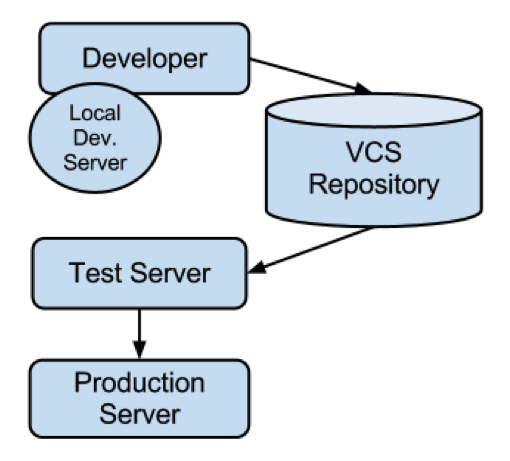Welcome to Surge. This week we’re going talk about eCommerce content marketing. The same principles apply to copywriting. We really focus on three core areas and they are broken down by the sales funnel.
Top-Of-The-Funnel eCommerce Content Ideas
Give Me An Example Of Top-Of-The-Funnel Content.
When writing the content because you want to know what the user’s intent, their search intent, is. It’s pretty easy when you’re putting the keyword research. Then you can see what pops up where this lands in that funnel.
At the top, you have people who are still researching and they’re becoming familiar with your product. They are seeing what’s out there.
When you’re in the middle of the funnel, you have people who are starting to compare. They themselves feel a little bit more confident and they’re trying to see what works for them. In this category, you’ll get product pages and brand specifications.
When hanging at the bottom, you’ll have people who very specifically search keywords and terms like the color, make, or model. then you want to provide even more specifics. These include customer reviews and product specifications, not just in general about the category.
Tailoring Your eCommerce Content Marketing for Your Audience
How do you reach potential customers?
You need to deliver on value. When writing content, top, middle, bottom, you want to either be informational or give categories and products. That means serving as an expert.
While at the top, I must target the intent of the searcher. If it is an informative piece that will live on my blog, that is meant to bring in top-funnel traffic.
That target person’s not ready to make a purchase decision. They might not have any clue as to what they need or for which they’re searching. That’s why they type in that really broad search query.
Then you have the middle of the funnel. That content is more likely going to live on a category page.
What is “High-Quality” eCommerce Content?
Let’s say you sell sectional sofas. This is going to be a category page all about the topic. I might not know that I want an L-shaped, navy blue, leather sectional, but I know that I want a sectional sofa. That’s the content that the website will provide, which is the middle of the funnel.
The product page will have a really specific product description, specifications, maybe even a video. Break down the content into those potential elements based on the search intent. One of the easiest ways to identify the search intent and ideal page is Google. While you can use alternative engines, the company is the most popular for a reason.
Google the question or search query. Then look at the top five results. What pages are they? The options are blog articles, product or category pages. Know what which entries belong on certain pages.
Targeted eCommerce Content Creation
Consider this example: I draft a blog and place it on a category page that’s displaying 36 different products and has pagination at the bottom. The blog is most likely not going to rank because Google has already identified that is not the search intent.
People are not ready to see products at this time. They’re looking for written information to make a decision. Information appears on lists, top 10s, how-tos, and other equivalent articles. Focus on the search intent when deciding, “What content should I need to create and where does this content need to live?”
So now I’ve created all this content in the funnel: top, bottom, and middle. I could just sit back and relax because of the effort. In theory, the work means I’m on page one.
Is that how it works?
No, never. And with content marketing, your strategy should always be, how am I going to stay on the first page of Google? Because you have hundreds of other companies just like you who want to be there and they’re invisible, but they’re there, and they will knock you off if you’re not constantly updating your content to match the search queries because search queries change, because people become more informed, or just whatever the case may be. Trends change.
You have to be as informed as your consumers are to know what it is they want. If you’re not going to do it, other companies will. They’ll knock you off the rankings.
SEO-Friendly eCommerce Content Marketing
Suppose you created content that’s good enough to get you on page one. It may not help you maintain your ranking. Hundreds of other companies try to outperform you in every single way.
Competitors make you stay on your toes. If you don’t have product videos, rich snippets or customer reviews, they’ll leverage these elements to outperform you. They’re going to try to have their content be at least 10 times better than yours.
To stay on page one, you need to make sure that you are proactive rather than reactive. Continue to do keyword research for that page, see if the trends have changed. Again, search intent can change based on the trends that Google is seeing.
Google starts to see where that bottom of the funnel traffic would typically go to a product page. Now the algorithm ranks category pages a little bit higher for those search queries. That category page needs to include those search queries because that is the type of content and page Google is starting to rank.
User data provides this information to the algorithm. Let’s say a user goes to your site based on a search query, sticks around, scrolls through and they go to multiple pages and they’re on your site for a decent amount of time. Google’s going to say, “Well, this is the type of content that people are looking for.”
If that’s on a category page, it’s going to be a category page because people want to see multiple products on one page as opposed to a single item. That’s always going to change. Look at what is happening and trying to be ahead of the game rather than all of a sudden getting knocked off page one and trying to claw your way back to the top.
Make sure that your content is fresh and relevant in order to stay number one. Google will see the last time that you updated your content. If it hasn’t been updated in years, Google’s going to assume that, that is outdated content?
Produce that top, middle, and bottom of the funnel traffic, where that content should live, and how to maintain that content. That should be that maintenance is really done on a weekly and monthly basis. It’s ongoing and never stops.
If you have any questions, please let us know. We’ll talk to you guys next week.
Are you writing content without seeing results?
Need a targeted, profitable content strategy?





